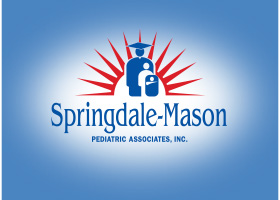Safety
Playground Safety
View spanish version, share, or print this article.
Each year, about 200,000 children get hurt on playground equipment with injuries serious enough to need treatment in the emergency department. About 15 children die each year from playground injuries. While many of these injuries happen on home equipment, most occur at school and public playgrounds.
Read on to find out how you can tell if the playground equipment at your home or child's school or in your neighborhood is as safe as possible.
How are children injured?
Most playground injuries occur when children fall off tall equipment like monkey bars. Other injuries happen when children
-
Trip over equipment
-
Get hit by equipment, such as a swing
-
Get bruises, scrapes, or cuts from sharp edges
Some injuries, such as head injuries, can be serious or even fatal. Other injuries may include broken bones, sprains, and wounds to the teeth and mouth.
The danger of wearing drawstrings and bicycle helmets on playground equipment
Drawstrings on clothing and bicycle helmets can strangle a child if they get caught on playground equipment. The best way to prevent this is to take drawstrings off jackets, shirts, and hats and shorten drawstrings on coats and jackets. Bicycle helmets should be worn while riding a bicycle, but
How to prevent playground injuries
To check if play equipment is safe, ask yourself the following questions:
-
Is the equipment the right size? For example, smaller swings are for smaller children and can break if larger children use them.
-
Is the play equipment installed correctly and according to the manufacturer's directions?
-
Can children reach any moving parts that might pinch or trap any body part?
-
What's underneath the equipment? The best way to prevent serious injuries is to have a surface that will absorb impact when children land on it. This is especially needed under and around swings, slides, and climbing equipment. (See "What are safer surfaces?").
-
Is wooden play equipment free of splinters and nails or screws that stick out?
Here are some other things to check for.
Climbing structures
-
Platforms higher than 30 inches above the ground intended for use by school-aged children should have guardrails or barriers to prevent falls.
-
Vertical and horizontal spaces should be less than 3½ inches wide or more than 9 inches wide. This is to keep a small child's head from getting trapped.
-
Rungs, stairs, and steps should be evenly spaced.
-
Round rungs to be gripped by young hands should be about 1 to 1½ inches in diameter.
Slides
-
Slides should be placed in the shade or away from the sun. Metal slides can get very hot from the sun and burn a child's hands and legs. Plastic slides are better because they do not get as hot, but they should still be checked before using.
-
Slides should have a platform with rails at the top for children to hold. There should be a guardrail, hood, or other device at the top of the slide that requires the child to sit when going down the slide. Open slides should have sides at least 4 inches high.
-
Make sure there are no rocks, glass, sticks, toys, debris, or other children at the base of a slide. These could get in the way of a child landing safely. The cleared area in front of the slide should extend a distance equal to the height of the slide platform, with a minimum of 6 feet and a maximum of 8 feet cleared.
Swings
-
Swings should be clear of other equipment. Make sure there is a distance in front of and behind a swing that is twice the height of the suspending bar.
-
Swing seats should be made of soft materials such as rubber, plastic, or canvas.
-
Make sure open or "S" hooks on swing chains are closed to form a figure 8.
-
Walls or fences should be located at least 6 feet from either side of a swing structure.
-
Swing sets should be securely anchored according to the manufacturer's instructions to prevent tipping. Anchors should be buried deep enough so that children can't trip or fall over them.
-
Swings should not be too close together. There should be at least 24 inches between swings and no more than 2 seat swings (or 1 tire swing) in the same section of the structure.
Remember, even with these measures, children still need to be watched closely while they are playing.
What are safer surfaces?
Safer surfaces make a serious head injury less likely to occur if a child falls. This is because they are made to absorb the impact of a fall. Some examples of safer surfaces include the following:
-
Wood chips, mulch, or shredded rubber—at least 9 inches deep for play equipment up to 7 feet high.
-
Sand or pea gravel—at least 9 inches deep for play equipment up to 5 feet high.
-
Rubber outdoor mats—make sure they are safety tested for playground equipment.
Check loose-fill surfaces often. They should be raked at least once a week to keep them soft. They also should be refilled often to keep the correct depth. Poured-in-place surfaces should be checked continually for wear. Concrete, asphalt, packed earth, and grass are
No surface is totally safe. Many injuries are preventable, but they can sometimes occur even at the safest playgrounds and with the best supervision. Be prepared to handle an injury if it does occur.
For more information about playground safety and safer surfaces or to get a copy of the



